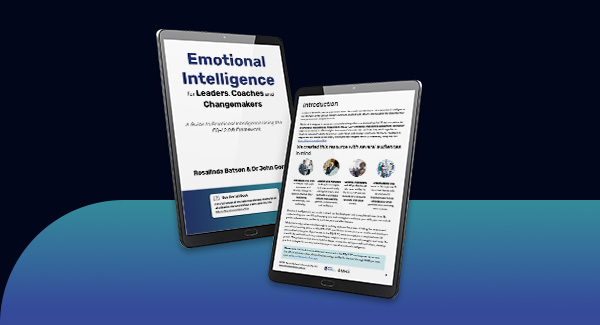Leadership Development Made Simple: A Practical Guide for Business Leaders

Why Leadership Development Matters
Great leaders don’t just emerge by chance—they are developed through intentional growth, learning, and experience. Whether you’re a business leader looking to strengthen your own leadership skills or an organisation aiming to build a strong leadership pipeline, having a structured leadership development plan is essential.
Leadership is no longer just about authority or decision-making—it’s about inspiring teams, navigating change, fostering innovation, and creating a high-performance culture. Organisations that invest in leadership development see higher employee engagement, improved business outcomes, and greater adaptability in an ever-changing world. Yet, many businesses struggle to implement effective development plans, leaving leadership growth to chance rather than strategy.
This guide is designed to be a practical, step-by-step resource for business professionals. Whether you’re an executive, HR leader, or emerging leader, you’ll find simple, actionable steps to help you define, implement, and sustain a leadership development plan that works.
What You’ll Get from This Guide
- A step-by-step approach to leadership development planning.
- Practical tools and templates to assess leadership skills and create development plans.
- Strategies for mentorship, coaching, training, and real-world leadership practice.
- Tips on measuring leadership growth and ensuring long-term success.
By the end of this guide, you’ll have a clear roadmap for developing effective leaders—whether for yourself, your team, or your organisation.
Let’s get started!
The Core Elements of a Leadership Development Plan
A successful leadership development plan isn’t just about attending training sessions—it’s about building the right skills, reinforcing learning through real-world application, and continuously growing as a leader. Whether you’re developing emerging leaders or strengthening your own leadership capabilities, a structured approach ensures meaningful progress.
Below are the seven essential components of an effective leadership development plan:
1. Define Leadership Goals
Before developing leadership skills, it’s crucial to clarify the goals of leadership development. Consider:
- What leadership challenges does your business face today?
- What kind of leaders does your organisation need for future success?
- Are there specific leadership gaps that need addressing (e.g., emotional intelligence, strategic thinking, adaptability)?
Defining leadership goals ensures that development efforts are aligned with business priorities and personal growth objectives.
2. Identify Key Leadership Competencies
Effective leaders share common traits, but leadership success varies across roles and industries. Organisations should define the core leadership competencies required for success.
Some key leadership competencies include:
- Emotional Intelligence – Self-awareness, empathy, and relationship management.
- Decision-Making & Problem-Solving – Making sound judgments under pressure.
- Communication & Influence – Inspiring teams and fostering collaboration.
- Adaptability & Change Management – Navigating uncertainty and leading through change.
- Coaching & Team Development – Empowering others to grow and succeed.
Using a leadership competency framework ensures development is targeted and measurable.
3. Assess Current Leadership Strengths and Gaps
To create a personalised development plan, leaders need a clear understanding of their current strengths and areas for growth. This can be achieved through:
- Psychometric assessments (e.g., EQ-i 2.0 for emotional intelligence).
- 360-degree feedback from peers, direct reports, and supervisors.
- Self-assessment exercises (e.g., leadership reflection journals).
An honest assessment helps tailor development efforts to individual needs and organisational priorities.
4. Create a Personalised Leadership Development Plan
Once strengths and gaps are identified, leaders should create a structured plan with SMART goals (Specific, Measurable, Achievable, Relevant, Time-bound).
A simple leadership development plan might include:
- Development Goals – e.g., “Improve team coaching skills within six months.”
- Learning Strategies – e.g., Attend a leadership coaching workshop.
- Application Methods – e.g., Implement coaching techniques in weekly 1:1 meetings.
- Measurement Criteria – e.g., Feedback from direct reports on coaching effectiveness.
A personalised plan ensures leaders take ownership of their growth and track progress effectively.
5. Implement Learning and Development Strategies
Leadership development is most effective when it combines multiple learning methods:
- Formal Training – Leadership workshops, eLearning, certifications.
- Mentorship & Coaching – Pairing with experienced leaders for guidance.
- On-the-Job Learning – Stretch assignments, leadership projects, rotational roles.
- Self-Directed Learning – Books, podcasts, online courses, peer discussions.
Blended learning ensures leaders develop skills in both theory and practice.
6. Apply Learning to Real-World Business Challenges
Leadership development isn’t just about learning—it’s about doing. Leaders should actively apply their skills in the workplace through:
- Leading a new initiative or team.
- Managing a high-stakes project.
- Handling a difficult team situation or conflict.
- Driving organisational change.
Real-world application cements learning and builds confidence in leadership abilities.
7. Measure Progress and Adjust the Plan
Leadership development is an ongoing process. Organisations and individuals should track progress using:
- Performance metrics – Leadership effectiveness scores, team engagement levels.
- Feedback mechanisms – Continuous input from direct reports, peers, and mentors.
- Self-reflection – Leadership journals, personal progress check-ins.
Regularly reviewing and adjusting the plan ensures leaders stay on track, adapt to new challenges, and continue growing.
Putting It All Together
A great leadership development plan is a mix of structured learning, real-world application, and continuous feedback. By following these seven core elements, organisations and individuals can develop leaders who inspire, perform, and drive business success.
In the next section, we’ll walk through a step-by-step guide to creating a leadership development plan that you can implement today.
Step-by-Step Guide to Creating a Leadership Development Plan
Now that we’ve covered the core elements of leadership development, it’s time to create a practical, actionable plan. Whether you’re developing yourself as a leader or designing a plan for your team, this step-by-step approach will help ensure structured growth and measurable progress.
Each step includes guiding questions and action points to make implementation easy.
Step 1: Define Your Leadership Vision and Goals
Great leadership development starts with clarity of purpose. Before building a plan, ask:
- What leadership challenges does your organisation currently face?
- What kind of leaders does your business need to succeed?
- What specific skills or behaviours do you need to develop as a leader?
- What are the key leadership gaps in your team or organisation?
Action Steps:
✅ Identify short-term and long-term leadership goals aligned with business strategy.
✅ Ensure goals are SMART (Specific, Measurable, Achievable, Relevant, Time-bound).
✅ Write a leadership mission statement (e.g., "I want to be a leader who fosters collaboration and innovation in my team").
Step 2: Identify Core Leadership Competencies
To become an effective leader, you need to focus on the right skills and behaviours. Organisations should establish a leadership competency framework that outlines the essential qualities for success.
Key Leadership Competencies to Consider:
- Emotional Intelligence – Self-awareness, empathy, interpersonal skills.
- Strategic Thinking – Visionary mindset, decision-making, problem-solving.
- Adaptability & Change Management – Navigating uncertainty, leading transitions.
- Coaching & Team Development – Mentoring, empowering, and developing talent.
- Communication & Influence – Inspiring and motivating teams effectively.
Action Steps:
✅ List the leadership competencies that are most important for your role or organisation.
✅ Use a self-assessment to determine your strengths and areas for growth.
✅ Gather feedback from peers, managers, or direct reports to get an external perspective.
Step 3: Assess Current Leadership Strengths and Gaps
Before you can grow as a leader, you need a clear baseline assessment. This will help identify where you excel and where improvement is needed.
Assessment Tools to Use:
- EQ-i 2.0 Emotional Intelligence Assessment – Measures key leadership behaviours.
- 360-Degree Feedback – Collects insights from colleagues, direct reports, and managers.
- Self-Reflection Exercises – Journaling or rating leadership skills on a scale.
Action Steps:
✅ Complete an EQ-i 2.0 emotional intelligence or leadership competency assessment.
✅ Gather feedback from others to get a well-rounded view of your leadership style.
✅ Identify your top three leadership strengths and three areas for development.
Step 4: Develop a Personalised Leadership Plan
With a clear understanding of leadership strengths and gaps, it’s time to create an actionable plan.
Components of a Leadership Development Plan:
- Development Goals – What specific skills or behaviours will you improve?
- Learning Strategies – How will you develop those skills? (e.g., training, coaching, real-world practice).
- Application Methods – Where will you apply these skills in your daily work?
- Measurement Criteria – How will you track progress and success?
Example Leadership Development Plan:
|
Goal |
Learning Method |
Application |
Measurement |
|
Improve coaching skills |
Attend leadership coaching workshop |
Conduct monthly 1:1 coaching sessions with team |
Feedback from direct reports |
|
Increase adaptability |
Read “The Adaptation Advantage” (Heather E. McGowan & Chris Shipley) and take a Change Style Indicator assessment |
Lead a change initiative in the company |
Self-assessment and manager feedback |
|
Enhance emotional intelligence |
Complete an EQ-i 2.0 assessment |
Practice active listening in meetings |
360-degree feedback |
Action Steps:
✅ Set at least three leadership development goals based on your assessment.
✅ Choose learning methods and real-world applications for each goal.
✅ Document your plan in a simple, structured format (template provided in the toolkit).
Step 5: Implement Learning and Development Strategies
Leadership development is not just about learning—it’s about consistent practice and real-world application.
Key Learning Strategies:
- Formal Training – Leadership programs, eLearning, workshops.
- Mentorship & Coaching – Learning from experienced leaders.
- On-the-Job Learning – Taking on stretch assignments, leading projects.
- Self-Directed Learning – Books, podcasts, TED Talks on leadership.
Action Steps:
✅ Choose two to three learning strategies that fit your leadership goals.
✅ Identify a mentor or coach to provide guidance and feedback.
✅ Dedicate specific time each week to leadership development activities.
Step 6: Apply Learning in Real-World Leadership Situations
Leadership skills are developed through experience, not theory. Leaders should actively seek opportunities to apply new skills in their day-to-day roles.
Practical Application Ideas:
- Lead a new initiative or project.
- Coach or mentor a junior colleague.
- Handle a challenging team conflict.
- Make a strategic decision with senior leaders.
Action Steps:
✅ Identify at least one real-world leadership opportunity to apply your learning.
✅ Track your experiences in a leadership journal to reflect on progress.
✅ Seek feedback from peers and mentors after applying new leadership behaviours.
Step 7: Measure Progress and Adjust the Plan
Leadership development is a continuous process. To ensure long-term growth, it’s important to track progress and make adjustments as needed.
Ways to Measure Leadership Growth:
- Employee and peer feedback – Are your leadership behaviours improving?
- Performance metrics – Are you leading more effectively?
- Self-reflection – Are you more confident and capable as a leader?
Action Steps:
✅ Set quarterly check-ins to review progress with a mentor or manager.
✅ Update your leadership plan every six months based on new challenges and goals.
✅ Celebrate small wins to stay motivated in your leadership journey.
Your Leadership Development Plan Starts Now
Developing leadership skills doesn’t have to be overwhelming—it’s about taking small, intentional steps that create lasting impact. By following this guide, you can create a structured, results-driven leadership plan that helps you grow into the leader you want to be.
In the next section, we’ll cover common pitfalls to avoid and how to ensure long-term success in leadership development.
Common Pitfalls to Avoid in Leadership Development
Many organisations and individuals start leadership development with good intentions but struggle to sustain progress. Avoiding these common pitfalls can make the difference between a successful leadership plan and one that falls flat.
Below are the most common mistakes leaders and organisations make—and how to prevent them.
1. Focusing Only on Training, Not Real-World Application
🚫 Mistake: Many leadership programs rely too heavily on workshops and courses, assuming that learning alone will create great leaders. However, leadership is developed through experience, not just education.
✅ Solution: Integrate on-the-job learning, stretch assignments, and leadership challenges into the plan. Encourage leaders to apply new skills immediately in their current roles.
📌 Example: Instead of just attending a leadership training session on decision-making, have leaders practice by leading a high-stakes project or making a strategic business recommendation.
2. Ignoring Emotional Intelligence and Self-Awareness
🚫 Mistake: Organisations often prioritise technical skills and business acumen over self-awareness, emotional intelligence (EQ), and interpersonal skills. However, leaders who lack EQ struggle with communication, conflict resolution, and team engagement.
✅ Solution: Include emotional intelligence assessments (e.g., EQ-i 2.0) in leadership development and encourage self-reflection exercises to build self-awareness.
📌 Example: Leaders should track their emotional triggers, seek feedback on their leadership style, and practice empathy-based decision-making.
3. No Clear Success Metrics or Progress Tracking
🚫 Mistake: Leadership development often lacks defined success criteria, making it difficult to measure progress or justify investment.
✅ Solution: Use key performance indicators (KPIs) such as:
- Employee engagement and team satisfaction scores.
- Leadership effectiveness ratings from 360-degree feedback.
- Business impact (e.g., project success rates, innovation, retention).
📌 Example: If the goal is to improve coaching skills, measure employee feedback on coaching effectiveness every quarter.
4. One-Size-Fits-All Development Programs
🚫 Mistake: Many organisations apply a generic leadership training program without considering individual needs, strengths, or career paths.
✅ Solution: Personalise leadership development plans based on individual strengths, weaknesses, and aspirations. Not every leader needs the same skills at the same time.
📌 Example: A first-time manager may need coaching and communication skills, while a senior leader may need strategic thinking and change leadership training.
5. Lack of Accountability and Follow-Through
🚫 Mistake: Leadership development often starts strong but fades due to lack of accountability. Without reinforcement, leaders fall back into old habits.
✅ Solution: Build accountability mechanisms such as:
- Mentorship and coaching relationships for ongoing guidance.
- Quarterly leadership check-ins to track progress and adjust plans.
- Leadership peer groups for shared learning and accountability.
📌 Example: Assign a mentor or coach who reviews progress every 90 days and provides feedback on leadership growth.
6. Not Linking Leadership Development to Business Strategy
🚫 Mistake: Leadership programs that exist separately from business priorities often lose momentum. If leadership growth isn’t solving real business challenges, it won’t be taken seriously.
✅ Solution: Align leadership development with organisational strategy and business goals. Ensure leadership training solves real problems and improves company performance.
📌 Example: If an organisation struggles with low employee engagement, leadership development should focus on coaching, communication, and trust-building—not just generic leadership training.
7. Overlooking the Importance of Feedback
🚫 Mistake: Many leadership development plans lack consistent feedback loops, causing leaders to develop in isolation without knowing if they’re improving.
✅ Solution: Implement regular feedback cycles using:
- 360-degree feedback from peers, managers, and team members.
- Self-assessments and reflection journals.
- Real-time coaching sessions to adjust leadership behaviours.
📌 Example: A leader working on improving team communication should seek direct feedback from their team every month and adjust their approach accordingly.
8. Failure to Adapt the Plan Over Time
🚫 Mistake: Leadership needs evolve, but many organisations create rigid, static development plans that don’t adapt to changing business demands.
✅ Solution: Review and update leadership development plans at least every six months based on:
- New business challenges and market conditions.
- Feedback from leadership assessments.
- Individual career progression and role changes.
📌 Example: If a leader’s role expands to include global teams, their development should shift to cross-cultural leadership training.
By avoiding these common mistakes, organisations and individuals can build stronger, more effective leaders who drive lasting business success.
Final Thoughts
Leadership isn’t a title—it’s a journey of continuous growth, learning, and action. The most effective leaders intentionally develop their skills, seek feedback, and apply their learning in real-world situations. Whether you’re an emerging leader, an experienced executive, or an HR professional shaping leadership development in your organisation, your commitment to growth is what sets you apart.
Leadership Development is a Continuous Process
Great leaders don’t stop learning once they’ve reached a certain level—they adapt, evolve, and refine their leadership skills as their careers and challenges change.
Recap of Your Leadership Development Journey
✅ You’ve defined your leadership goals.
✅ You’ve identified key leadership competencies to develop.
✅ You’ve created a personalised Leadership Development Plan.
✅ You’ve committed to real-world application and feedback loops.
✅ You’ve explored resources to deepen your leadership expertise.
Now, it’s time to put your plan into action!
Your Next Steps
Start Taking Action Today
👉 Review your Leadership Development Plan and set a goal for the next 30 days.
👉 Choose one small leadership behaviour to practice daily (e.g., active listening, coaching, decision-making).
Seek Feedback & Accountability
👉 Share your leadership goals with a mentor, coach, or trusted peer.
👉 Schedule regular check-ins to track progress and adjust your plan.
Keep Learning & Growing
👉 Pick a leadership book, podcast, or course from the recommended resources.
👉 Stay engaged with leadership communities and industry events.
Take the First Step Now!
- Ask yourself: What’s ONE leadership action I can take today?
- Write it down. Commit to it. Start NOW.
Great leadership isn’t about knowing everything—it’s about being willing to grow, learn, and take action. Your leadership journey starts with a single step.
Thank You & Keep Leading Forward!
Sign up for the Neural Networks Newsletter
Join our mailing list to receive information on leadership, sales, and emotional intelligence.

 +61 9555 7955
+61 9555 7955